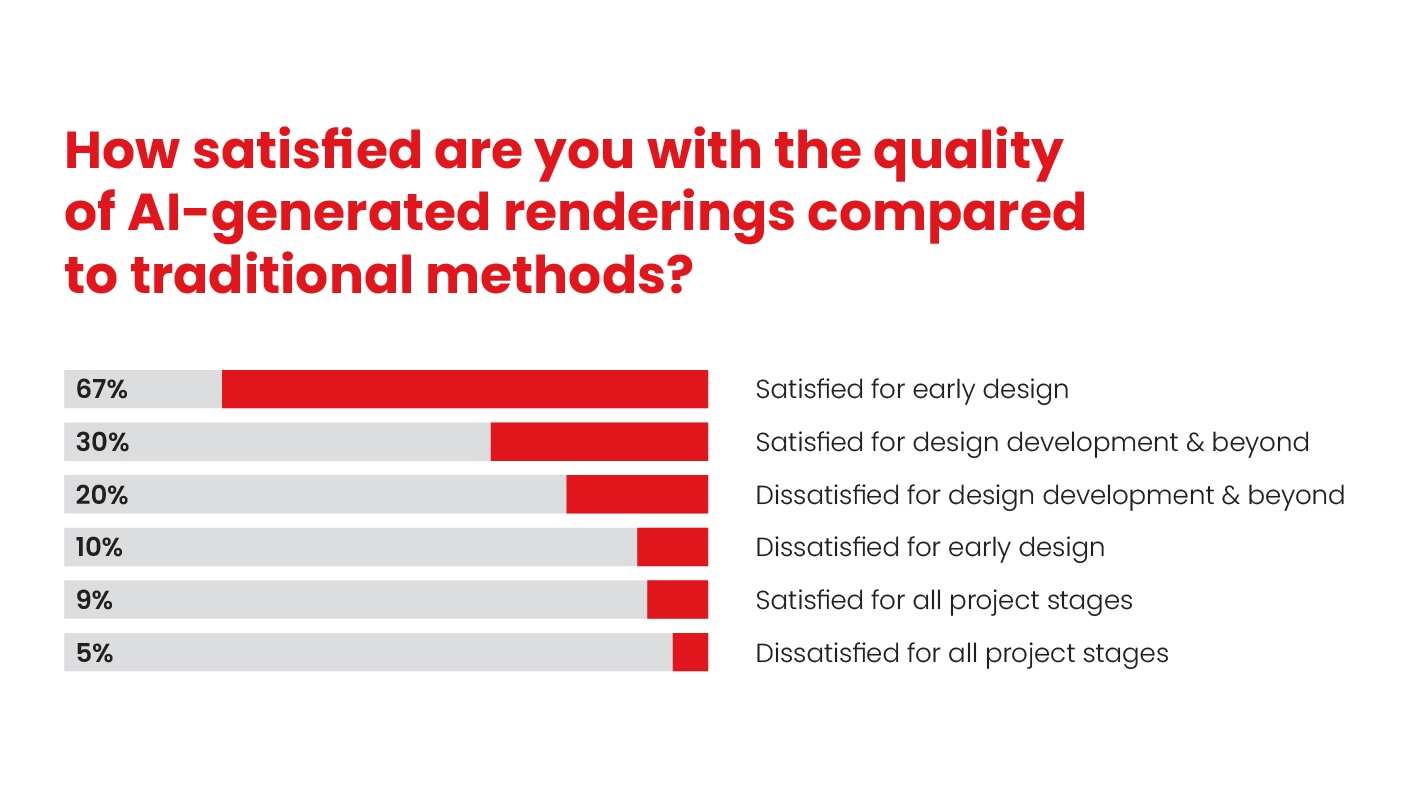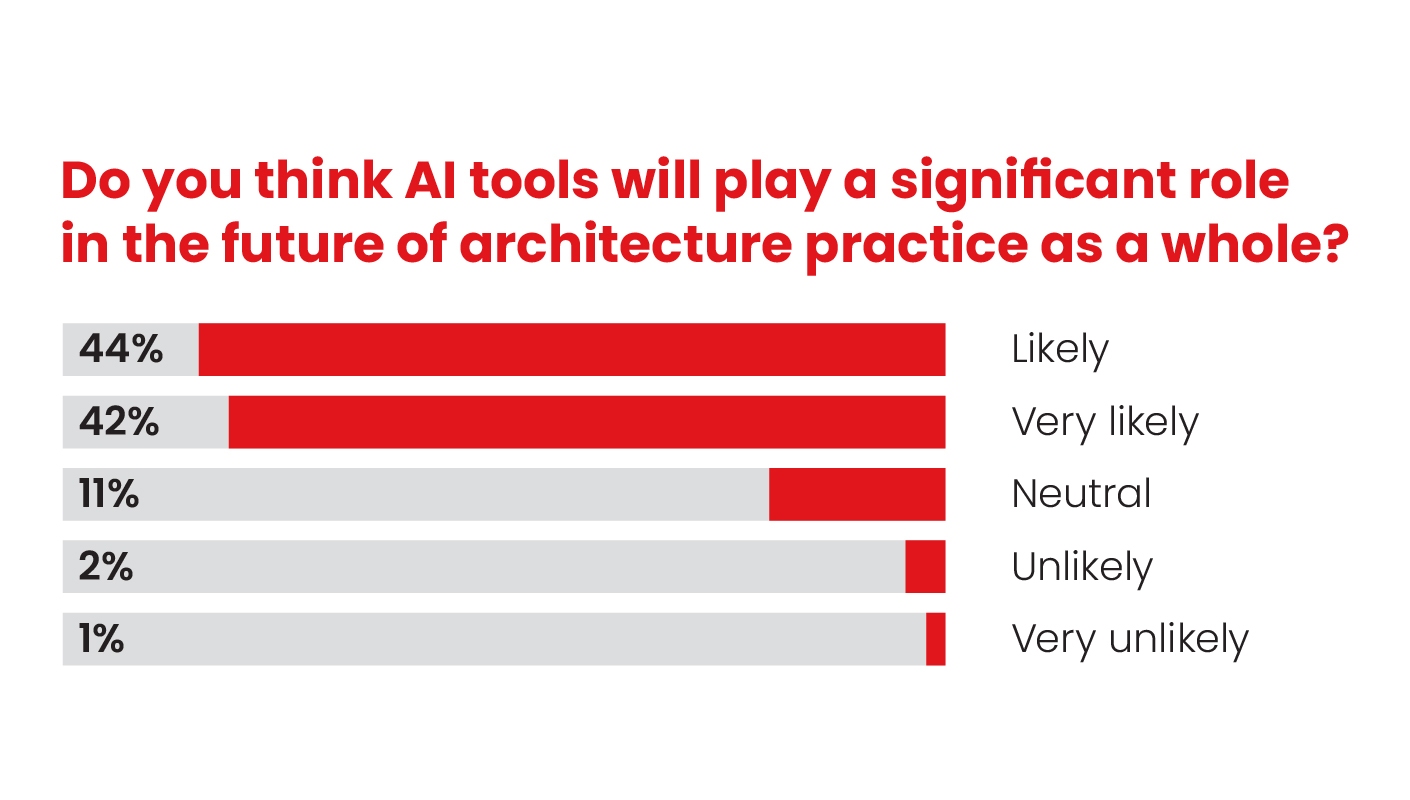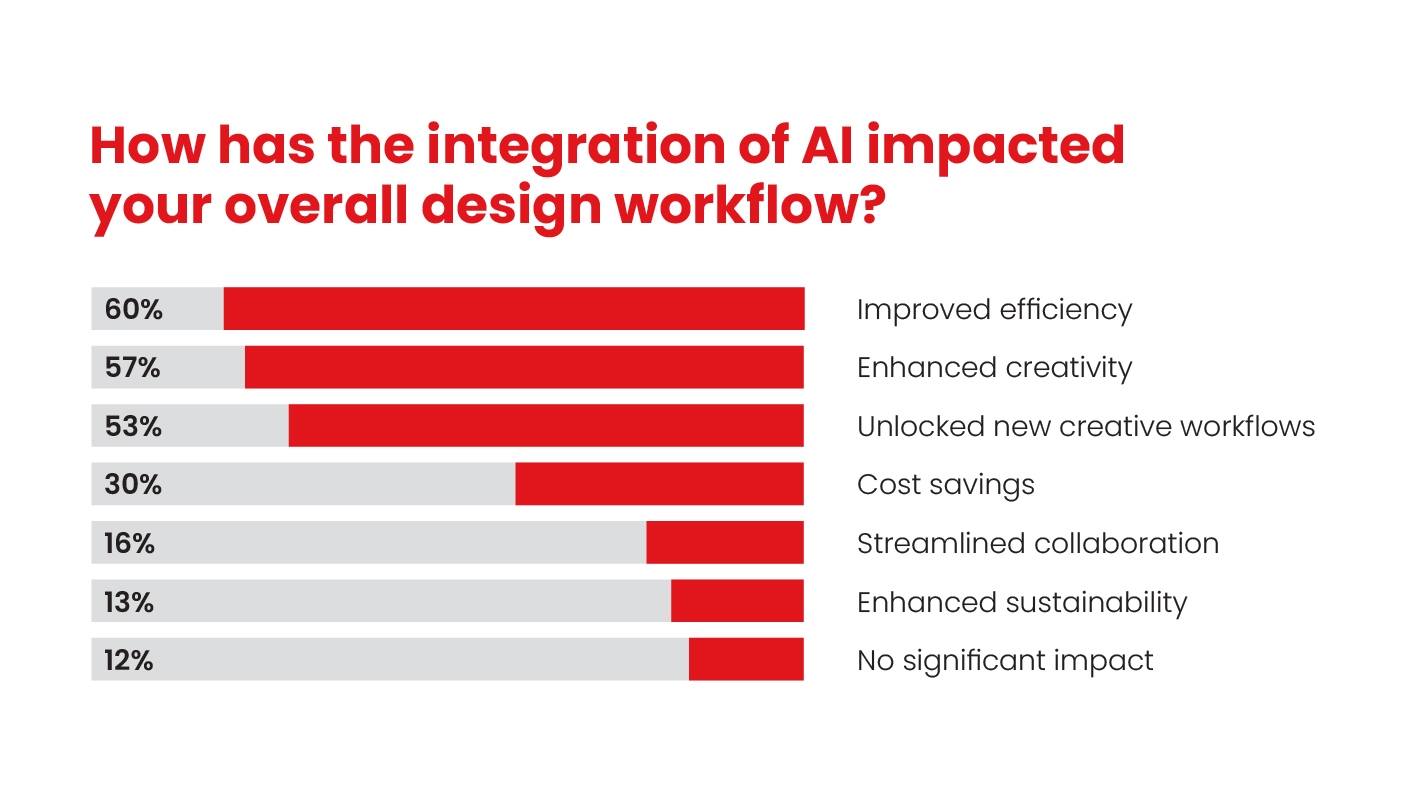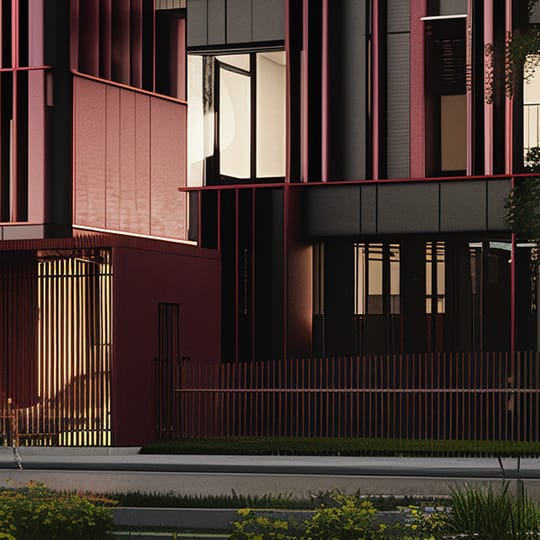With AI poised to take over almost everything, we asked architecture professionals worldwide about the opportunities it presents and how they’re using it.
You may have heard about AI. But who is using it in the world of architecture? What do they use it for? And how are they overcoming the challenges it presents?
These are some of the questions we invited architecture professionals to answer with our recent survey, ‘The State of AI in Architecture.’
A collaboration between Architizer and Chaos, the results uncover deep insights into the current application and future usage of AI in architecture.





Download the full report: The State of AI in Architecture >
We surveyed 1,200+ architects and design professionals from the United States, the United Kingdom, and over 100 other countries for a broad perspective on how firms of all sizes navigate AI in architectural design.
We asked participants about topics including:
- The current state of AI integration in design processes.
- Practical applications of AI in ongoing projects.
- AI's potential impact on architects’ professions.
The results indicate a growing number of architects are experimenting with AI in their design workflow. Initial project phases have seen the most successful implementation of AI, and there's a strong belief in AI's potential to add significant value to the industry.
However, there are concerns about the need for more regulation and ethical guidelines, as well as challenges around software integration, time constraints for testing, and limited training resources.
Additional insights include:
- 46% of respondents utilize AI tools in their architectural projects, and another 24% intend to use AI technologies soon.
- Approximately 74% of those surveyed will likely increase their use of AI next year.
- 86% believe that AI will play a significant role in the future of architecture practice.
This report explores both the exciting opportunities and the challenges that AI presents, whether you're an archviz freelancer or a tech leader in an architecture firm.





